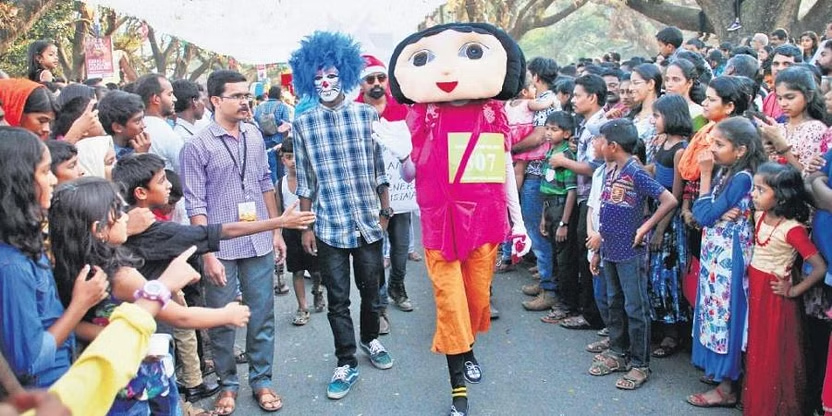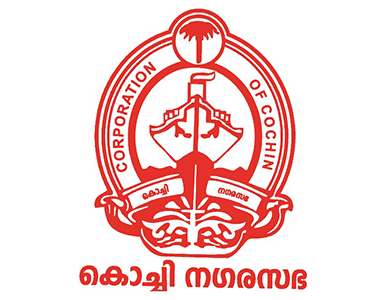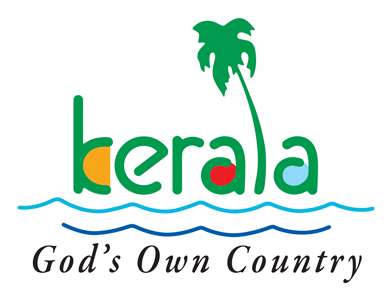
‘National Festival’ of Kochi
Waking up from Covid-induced slumber, the 39th edition of the Cochin Carnival promises to be a gala involving all communities settled in the city.
It’s time for Kochi’s darling year-ender festival — the Cochin Carnival — and artist Asif Mattancherry, 52, is busy prepping up to regale the audience with his outlandish ‘fashion show’. It is an annual ritual for him.
The is ipsum dolor sit amet consectetur adipiscing elit. Fusce eleifend porta arcu In hac habitasse the is platea augue thelorem turpoi dictumst. In lacus libero faucibus at malesuada sagittis placerat eros sed istincidunt augue ac ante rutrum sed the is sodales augue consequat.
Asif is visibly excited as the 39th edition of the Cochin Carnival was formally launched last Sunday, with the traditional peace and solidarity ceremony involving military and civilian officials, on the premises of St Francis Church in Fort Kochi. True-blue Kochiites have been eagerly awaiting a big-bang return of the carnival, which was subdued due to the pandemic crisis over the past two years.
A freelance photographer by profession, Asif is known in carnival circles for recreating “the hippie look”, with those trademark floral shirts and flared trousers. “I have been adorning the hippie style for a decade,” he says. “Sometimes, I become a policeman of the 1980s, wearing khaki shorts. This year, you will see me in a disco dancer avatar.” For Asif, the Cochin Carnival is the “national festival of Kochi”. The carnival, he says, has evolved organically over the years, witnessing the participation of thousands of people every year. “The change over time has been huge,” he adds.
“The most important thing about the festival is that people get an opportunity to showcase their talents. The festival couldn’t be held for the past two years due to the pandemic. Unlike other festivals, this is a secular, harmonious one in which people of all religions and all walks of life come together.”
Asif adds with pride that he did not let go of the “tradition” even when Covid was raging on. “I went to Fort Kochi and did a solo hippie parade on the empty streets,” he laughs. Families in Fort Kochi brim with vivid memories when speaking about the carnival. “From my childhood days, I have been attending the Cochin Carnival along with my family,” gushes Jeena Williams, a homemaker.
“It is a grand celebration where various events such as fancy dress competitions, puli kali and tableau are held. People from across the city and tourists throng the carnival.” The grand finale on the night of December 31 draws massive crowds. People throng to watch the giant effigy of a mythical Santa-like legend named ‘Pappanji’ being burned down on the beach – as a sign of bidding farewell to the past year and welcoming the New Year.
Long history Between the 16th century, when the Portuguese arrived, and the end of the 18th century popularly known as the European Age of Discovery Kochi became a prominent centre for trade and cultural exchange. The Portuguese introduced the annual tradition of year-end galas in Kochi. And its hangover stayed on. Old-timers say the Vasco Da Gama Square in Fort Kochi became synonymous with the Cochin Carnival.
By the 1970s, however, the events were limited to some fancy dress competitions and New Year’s eve celebrations, conducted mostly by a few clubs in the area. Then came the concept of a “beach festival”, which reclaimed some lost mojo.
In 1984, three youngsters of Fort Kochi – George Augustine Thundiparambil (Roy), Ananda Felix Scaria (Ananda Surya) and Antony Anup Scaria (Anoop) thought of organising a grand, month-long public event to celebrate the signing of a UN proclamation declaring 1985 as the International Year of Youth.
During that time, former Kochi mayor K J Sohan and former revenue divisional officer K B Valsala Kumari were the chairman and vice-chairperson, respectively, of the Beach Festival Committee (the first Cochin Carnival).
“When the UN announced 1985 as the International Year of Youth, three peace-based slogans were given. However, the UN allowed the addition of locally relevant slogans. Thus, we added adventure and environment,” recalls Sohan, who is currently the state convener of the Indian National Trust for Art and Cultural Heritage.
“‘Adventure’ was added because when Mahatma Gandhi visited the Fort Kochi beach in 1925, he said, ‘Kochi is the epitome of adventure’. The city still upholds that spirit. We added ‘environment’, as the city is closely connected to many waterbodies, and they had to be protected.”
Sohan says the carnival soon evolved as an annual festival where people from different communities networked and gelled. “In the first year the International Year of Youth the carnival was announced as a beach festival. It later transformed into the Cochin Carnival,” he adds. “For over 10 years, (committee member) V C Joseph aka Joppan and I spearheaded the carnival. Later, the youngsters took over and carried the tradition forward.”
Back with a bang One aspect of the carnival that all Fort Kochi residents highlight is the spirit of unity in diversity. This year, the carnival’s patrons aim to bring together all communities of Kochi to showcase their cultural heritage through music, dance and theatrical performances and food. The carnival will be “more special”, they promise. “Carnival is one of the largest annual tourist draws in Kerala,” notes Sohan, ex-Mayor. “We celebrate the season with great joy, drawing foreign and domestic tourists to the city. This time, the carnival will witness the active participation of various communities such as the Gujaratis, Konkanis, Tamilians, Jains, and Jews.” Sohan adds a meeting in this regard has been held with the sub-collector and representatives of these communities. Sporting events too have been planned. “The corporation gives about `4 lakh to hold various competitions in the run-up to the Mayor’s Trophy. About 100 local clubs are also involved,” says Cochin Carnival adviser P J Solly.
Courtesy: newindianexpress.com





